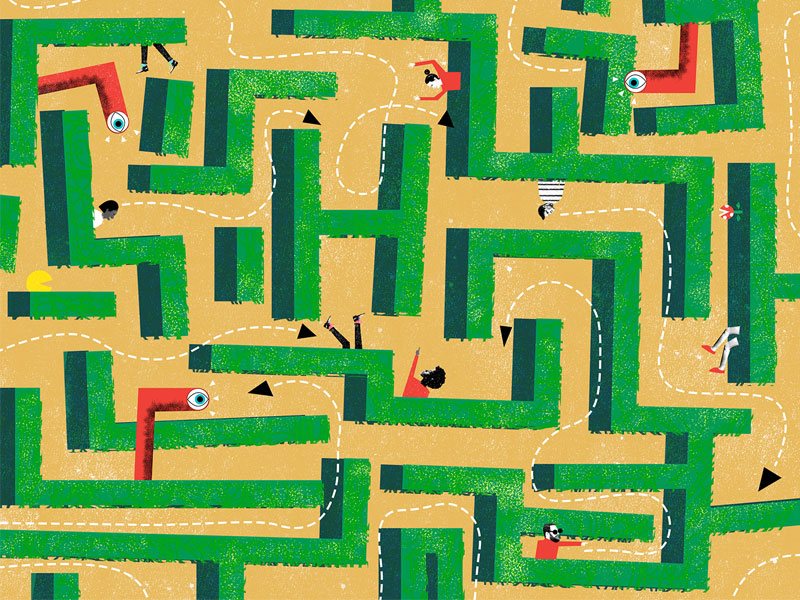The Hoosierist: How Do Farmers Make Corn Mazes?

How do farmers make corn mazes? Nate Kitch
Q: How do farmers make corn mazes?
A: Very carefully. Though the process looks straightforward, building a proper corn labyrinth can be a huge pain in the back 40. For instance, corn has a short life span, so if you plant the maize for your maze in spring, it will be a withered mess by October. To get a decent, maze-worthy crop, you must plant in high summer, which means you need a drought-tolerant corn variety that can survive the doggiest of the dog days. Oh, and you’ll also want a tall, leafy type, so your guests won’t be able to see through, or over, the maze. Finally, as fall approaches, you’ll need a tractor to carve out the design. Some old timers still sketch plans on graph paper and carve them using rudimentary field markers and dead reckoning. But there’s a long list of national firms that furnish prefab designs, which they cut for you with GPS-guided tractors. It’s basically the agricultural version of those website templates you can get from GoDaddy.
Q: Why are so many Leonard Bernstein artifacts housed at IU? He didn’t go there.
A: The university’s warm relationship with the man responsible for West Side Story is proof that a little hospitality can go a long way. Though Bernstein never studied at IU, he was won over in 1976 when he recruited performers from the Jacobs School of Music to do a tour of his opera, Trouble in Tahiti. Then, in 1982, he spent two months in residence on campus, composing his last opera, A Quiet Place. He stayed at a condo on Lake Monroe, where his posse included his cook and chauffeur. Things must have gone well, because in 2009, IU received a gift from his estate, including the contents of his conducting studio. The university owns his 39 Grammy nomination plaques, the desk where he wrote the West Side Story score, and a conducting stool from the Vienna Philharmonic that also accommodated the baroque backside of Johannes Brahms.
Q: Someone told me that Johnny Appleseed is buried in Indiana. Is that true? I thought he was fake.
A: Though his exploits sound as plausible as those of Paul Bunyan or, for that matter, Bugs Bunny, Johnny Appleseed was indeed 100 percent real. His name was John Chapman, and he became famous for traveling around planting apple trees while wearing ragged clothes and a frying pan for a hat. Needless to say, psychiatric medications weren’t a “thing” in his day. Chapman owned some acreage near Fort Wayne, and died in 1845 when he exhausted himself by walking 20 miles in one day to visit one of his holdings. Today, you can view his grave at Fort Wayne’s Johnny Appleseed Memorial Park, where his rustic marker stands, poetically enough, among some apple trees.
Have Indiana-related questions? Send them to hoosierist@IndianapolisMonthly.com.





